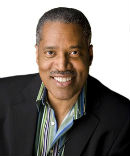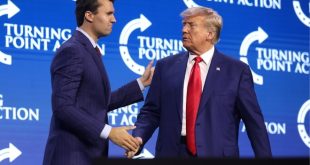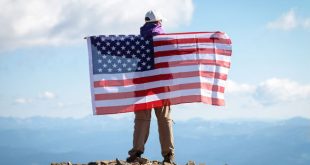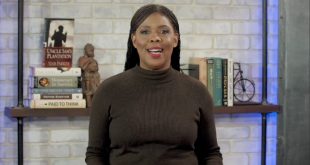Black lives matter. Black businesses, not so much.
Four Minneapolis cops were summarily fired, with one of the four arrested and charged with the murder of a black suspect named George Floyd, who died in police custody.
In cellphone video apparently taken by one of the many witnesses, a cop later identified as Derek Chauvin placed his knee on Floyd’s neck for almost nine minutes as Floyd laid face-down and handcuffed on a city street. The cops ignored Floyd’s repeated plea, “I can’t breathe.” By the time paramedics arrived, Floyd was unresponsive and apparently lifeless. After about an hour of attempted resuscitation by EMTs and emergency room staff, he was pronounced dead.
As of this writing, there have been eight consecutive days of protests in the streets of Minneapolis, with many businesses attacked, looted and set on fire. The local district attorney is continuing the investigation and may file additional charges against the officers. But this has not stopped the protests, many violent, that broke out in other cities across the country, including Los Angeles, Washington, D.C., and Atlanta.
Ostensibly, the protests are about the alleged “epidemic” of “widespread” and “race-based” police brutality against blacks and the lack of confidence, in the case of Floyd, that justice will be done. The problem with these assertions is that they are false, not supported by the data.
There is no “epidemic” of racist cops killing black suspects. According to the Centers for Disease Control and Prevention, police killings of blacks declined almost 80% from the late ’60s through the 2010s, while police killings of whites have flatlined. Meanwhile, in 2017, according to the CDC’s National Vital Statistics Reports, non-Hispanic blacks were eight times more likely to be a victim of a homicide (homicide death rate: 23.2 per 100,000) than non-Hispanic whites (homicide death rate: 2.9 per 100,000).
The No. 1 cause of preventable death for young white men is accidents, like car accidents and drownings. The No. 1 reason for death, preventable or otherwise for young black men, is homicide, almost always at the hands of another young black man. In 2018, there were approximately 7,400 black homicide victims, more than half of the nation’s total number of homicides, out of a black population of 13%. Of that number, the police killed a little over 200 blacks, and nearly all of them had a weapon or violently resisted arrest.
In recent years, the police have averaged killing about 1,000 Americans per year. Of that number, half are white and one-quarter are black, with the race of remaining suspects of another race or unknown. Of the approximately 1,000 killed by cops, less than 4% involve a white officer and an unarmed black man.
Recent studies not only find no “systemic” abuse of black suspects by the cops, but if anything, cops are more hesitant, more reluctant, to use deadly force against a black suspect than against a white suspect. The Manhattan Institute’s Heather MacDonald writes: “Regarding threats to blacks from the police: A police officer is 18.5 times more likely to be killed by a black male than an unarmed black male is to be killed by a police officer.” Last year, according to the Washington Post, the police killed nine unarmed blacks. They killed 19 unarmed whites. In recent years, about 50 cops have been shot and killed annually in the line of duty. So, more cops are killed each year than are unarmed black suspects.
Minneapolis in 2020 is not Birmingham, Alabama, in the ’50s. The top cop is not a racist segregationist like Birmingham’s infamous Bull Connor, who sicced dogs and turned water hoses on civil rights protesters. The police chief of Minneapolis is Mexican-American and black. The mayor is a young Democratic liberal. The district’s U.S. House representative is black. The vice president of the city council is black, as is the state attorney general.
In Baltimore, where in 2015, a black man named Freddie Gray died in police custody, how could one, with a straight face, argue that resident blacks suffer from “institutional” racism? The mayor was a black female; the top two officials in the police department were black; the city council was majority black; the state attorney who brought the charges against six officers was black; three of the six charged officers were black; the judge before whom two officers tried their cases was black; the U.S. attorney general was black, as was the president of the United States. Institutional racism?
Finally, why didn’t President Barack Obama’s administration deal with this alleged “systemic” or “structural” or “institutional” police brutality against blacks in his eight years in office? Meanwhile, over Memorial Day weekend in Obama’s adopted hometown of Chicago, 10 people were killed, and 49 were shot. In a city where roughly one-third of the population is black, 70% of the city’s homicide victims, according to the Chicago Police Department, are black.
When and where do the protests begin?
COPYRIGHT 2020 LAURENCE A. ELDER
DISTRIBUTED BY CREATORS.COM
By Fibonacci Blue from Minnesota, USA – Protest and riot aftermath on East Lake Street, CC BY 2.0, Link
 Larry Elder is a bestselling author and radio talk-show host. To find out more about Larry Elder, or become an “Elderado,” visit www.LarryElder.com. Follow Larry on Twitter @larryelder.
Larry Elder is a bestselling author and radio talk-show host. To find out more about Larry Elder, or become an “Elderado,” visit www.LarryElder.com. Follow Larry on Twitter @larryelder.
The views expressed in opinion articles are solely those of the author and are not necessarily either shared or endorsed by Black Community News.
 CURE News and Clergy Blog News and Commentary for Christians
CURE News and Clergy Blog News and Commentary for Christians




The question my own son keeps asking is “Why didn’t all those people filming try to get the cop off of Floyd?”
They certainly seem brave enough later when getting into cops’ faces and taunting them.
My son said, “If you’re going to risk getting arrested or even shot by a cop, why not do it trying to save the life of a helpless guy. Isn’t that more noble than taking that risk destroying things?”
You can’t do that. It’s called “lynching.”